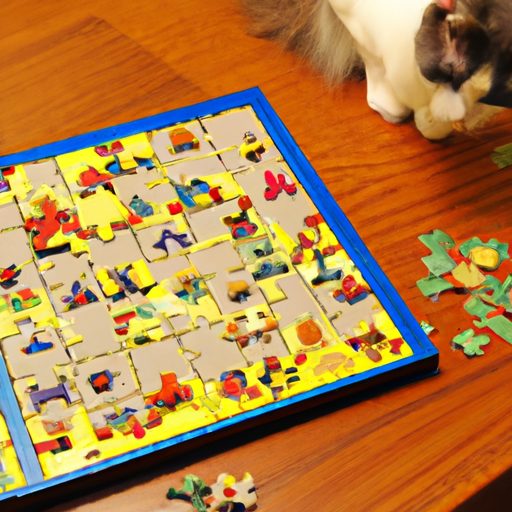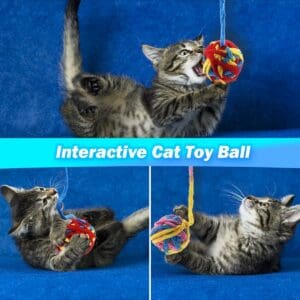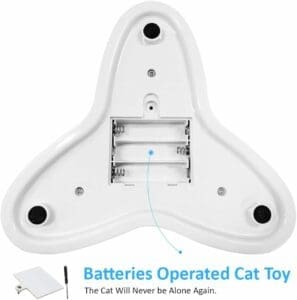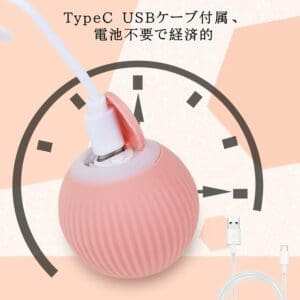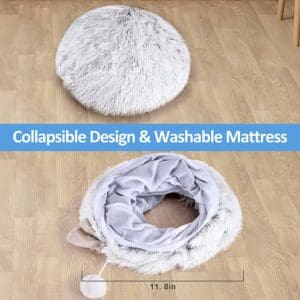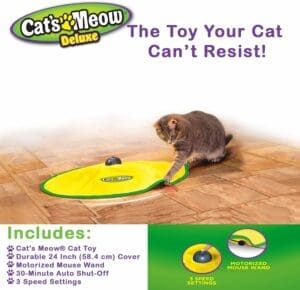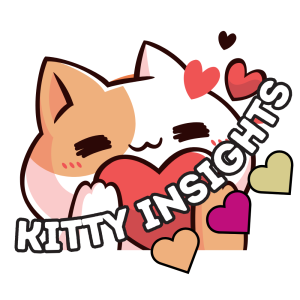Cats are renowned for their independent and curious nature, constantly seeking ways to keep themselves entertained. While many cat owners provide the basic necessities for their feline friends, such as food, water, and a cozy place to sleep, mental stimulation often goes overlooked. However, incorporating cat enrichment into your pet’s daily routine can offer numerous benefits to their overall well-being. From reducing stress and anxiety to preventing destructive behavior, providing your cat with mentally stimulating activities can enhance their cognitive abilities and promote a healthier and happier life. Whether it’s interactive toys, puzzle feeders, or even creating a safe outdoor space, engaging your cat’s natural instincts and providing them with mental challenges will undoubtedly enrich their lives.
Understanding Cat Enrichment
Defining Cat Enrichment
Cat enrichment refers to providing environmental stimuli and activities that fulfill a cat’s natural instincts and promote their physical and mental well-being. It involves creating a stimulating environment that allows cats to engage in natural behaviors, preventing boredom and promoting a happier and healthier feline companion.
Importance of Mental Stimulation for Cats
Mental stimulation is crucial for cats as it helps prevent behavioral issues and contributes to their overall well-being. Cats are intelligent and curious creatures that need mental challenges to stay sharp and satisfied. Engaging their minds through various enrichment activities not only prevents boredom but also reduces stress, anxiety, and depression.
Types of Cat Enrichment
Physical Enrichment
Physical enrichment focuses on providing opportunities for cats to engage in physical exercise and play. This type of enrichment includes activities such as interactive play with toys, climbing structures, and providing spaces for jumping and running. Physical enrichment helps keep cats fit, maintain a healthy weight, and develop their agility and coordination.
Interactive Toys and Treats
Interactive toys and treats are designed to mentally stimulate cats while simultaneously providing a rewarding experience. Puzzle toys, for example, require cats to use their problem-solving skills to retrieve hidden treats or kibble. Treat dispensers also challenge their intelligence and keep them entertained for extended periods. Additionally, interactive toys infused with catnip can provide sensory enrichment, keeping cats engaged and happy.
Environmental Enrichment
Environmental enrichment refers to enhancing a cat’s living space to cater to their natural instincts and needs. This can include providing hiding spots, scratching surfaces, and vertical spaces such as cat trees and perches. Creating an enriched environment allows cats to explore, play, and feel safe, ensuring they lead fulfilling lives.
Sensory Enrichment
Sensory enrichment focuses on engaging a cat’s senses, including touch, sound, sight, and smell. Exploring different textures, such as soft blankets or scratchers, allows cats to satisfy their natural urge to knead and claw. Sound toys, such as crinkle balls or chirping mice, provide auditory stimulation. Visual stimulation can be achieved through bird feeders or recorded nature videos, while scent enrichment can be introduced through cat-safe plants or diffusing calming pheromones.
Promoting Physical Health through Enrichment
Encouraging Exercise
Cat enrichment plays a vital role in encouraging physical exercise for our feline friends. Engaging in play and interactive activities helps cats burn off excess energy, maintaining a healthy weight and muscle tone. Regular exercise also reduces the risk of obesity and related health issues such as diabetes and joint problems.
Preventing Obesity
Obesity is a common health concern for cats, especially those with sedentary lifestyles. Enrichment activities, such as engaging in active play or using treat-dispensing toys, can help prevent obesity by encouraging movement and portion control. The mental stimulation provided by these activities also helps distract cats from overeating out of boredom.
Improving Agility and Coordination
By providing physical enrichment opportunities, such as climbing structures and interactive toys, cats can improve their agility and coordination. Jumping, running, and climbing help them develop their muscles and hone their motor skills. This not only benefits their physical health but also enhances their overall well-being and quality of life.
Enhancing Mental Well-being
Preventing Boredom and Depression
Cats are intelligent animals and crave mental stimulation to prevent boredom and associated behavioral problems. Enrichment activities provide them with the opportunity to engage in hunting and exploring behaviors, simulating their natural instincts. When cats are mentally stimulated, they are less likely to become bored, depressed, or engage in destructive behaviors.
Reducing Stress and Anxiety
Enrichment activities can also help reduce stress and anxiety in cats. By engaging their minds and redirecting their attention to enriching experiences, cats can feel more relaxed and content. By providing an environment that mimics their natural habitat and offering outlets for natural behaviors, cat owners can alleviate stress and anxiety in their feline companions.
Building Confidence and Self-Esteem
Enrichment activities can help build a cat’s confidence and self-esteem. By successfully completing puzzles, navigating challenging obstacles, and engaging in interactive play, cats gain a sense of accomplishment and satisfaction. This boosts their confidence and fosters a positive sense of self, contributing to their overall well-being.
Interactive Toys and Treats
Benefits of Puzzle Toys
Puzzle toys are a fantastic way to provide mental stimulation for cats. These toys require cats to use their problem-solving skills to access hidden treats or kibble. By engaging in puzzle-solving, cats exercise their minds, improve their cognitive abilities, and keep boredom at bay. Puzzle toys also encourage cats to eat more slowly, preventing common digestive issues.
Using Treat Dispensers
Treat dispensers are interactive toys that reward cats with treats or kibble as they engage with the toy. These toys stimulate a cat’s curiosity and intelligence, encouraging them to figure out how to access the treats. Treat dispensers not only provide mental stimulation but also slow down eating, reducing the risk of gastrointestinal problems.
Engaging with Interactive Catnip Toys
Catnip-infused interactive toys can provide both mental and sensory enrichment for cats. Catnip is known to stimulate a cat’s senses, inducing a state of excitement or relaxation, depending on the individual’s response. Playing with catnip toys engages their minds and provides a pleasurable experience, promoting mental well-being and reducing stress.
Creating an Enriched Environment
Providing Vertical Spaces
Cats are natural climbers, and offering them vertical spaces to explore and perch is essential. Cat trees, shelves, or wall-mounted perches provide cats with elevated areas where they can observe their surroundings, exercise their muscles, and feel safe. By providing vertical spaces, owners can satisfy their cats’ natural instincts and enhance their environment.
Creating Hiding Spots
Cats are solitary animals by nature and often require secluded spaces where they can retreat and feel secure. Providing hiding spots, such as covered beds, boxes, or tunnels, allows cats to have a sense of privacy and escape from potential stressors. Hiding spots also provide opportunities for stalking and pouncing, mimicking their natural hunting behaviors.
Offering Scratching Surfaces
Scratching is a natural behavior for cats, necessary for claw maintenance and marking territory. By providing appropriate scratching surfaces, such as scratching posts or boards, cat owners can redirect this behavior away from furniture and carpets. Scratching surfaces also provide a form of physical exercise and help relieve stress and anxiety.
Introducing Cat Trees and Perches
Cat trees and perches are fantastic additions to an enriched environment. These structures offer various levels for climbing, jumping, and resting, satisfying a cat’s need for vertical space. Cat trees also provide opportunities for scratching, hiding, and playing, serving as multi-purpose enrichment stations that cater to a cat’s physical and mental well-being.
Sensory Stimulation for Cats
Exploring Different Textures
Cats are tactile creatures that enjoy different textures. Providing a variety of surfaces, such as soft blankets, sisal rope, or corrugated cardboard, gives them the opportunity to knead, scratch, and explore. Including different textures in their environment adds sensory stimulation and enhances their overall enrichment experience.
Playing with Sound Toys
Sound toys are great for engaging a cat’s auditory senses. Toys that make crinkling, chirping, or rattling sounds pique their curiosity and encourage play. These toys mimic the sounds of prey and engage a cat’s hunting instincts. By incorporating sound toys into their enrichment routine, owners can provide an additional layer of sensory stimulation.
Introducing Visual Stimulation
Visual stimulation can be achieved by incorporating various elements into a cat’s environment. Placing bird feeders outside windows allows cats to observe and mimic hunting behaviors. Playing recorded nature videos featuring birds or other wildlife can also provide visual stimulation for indoor cats. These visual experiences help prevent boredom and keep cats engaged.
Incorporating Scent Enrichment
Cats have a highly developed sense of smell, and incorporating scent enrichment can enhance their environment. Cat-safe plants, such as catnip or silver vine, emit fragrances that can excite and stimulate cats. Diffusing calming pheromones, such as Feliway, can help reduce stress and anxiety and create a comforting atmosphere for cats.
DIY Cat Enrichment Ideas
Homemade Puzzle Toys
Creating homemade puzzle toys can be a fun and budget-friendly way to provide mental stimulation for cats. Simple ideas include hiding treats in empty toilet paper rolls or tissue boxes, or placing treats in a puzzle feeder made from a plastic bottle with holes cut into it. DIY puzzle toys encourage cats to explore and problem-solve, keeping their minds engaged.
Repurposing Household Items
Many common household items can be repurposed into cat enrichment tools. For example, cardboard boxes can be turned into hiding spots or DIY tunnels. Old t-shirts or blankets can be fashioned into beds or hammocks. Repurposing these items not only provides environmental enrichment but also encourages cats to explore and interact with their surroundings.
Creating DIY Cat Trees
Building a DIY cat tree can be a rewarding project and a great way to provide vertical space and scratching surfaces. Using sturdy wooden platforms, sisal rope, and carpet remnants, cat owners can create customized cat trees that fit their cat’s preferences and their home’s aesthetic. DIY cat trees offer cats a place to climb, rest, scratch, and engage in natural behaviors.
Enrichment for Different Life Stages
Kittens and Early Socialization
Kittens require specific enrichment activities to aid in their development and socialization. Age-appropriate interactive toys, climbing structures, and safe exploration areas help kittens build their coordination, agility, and confidence. Social interactions with humans and other animals during this stage are crucial in shaping their behavior and adapting to their environment.
Adult Cats and Environmental Enrichment
Adult cats benefit from a variety of enrichment activities that cater to their physical and mental needs. Providing a stimulating environment with scratching posts, puzzle toys, and vertical spaces helps keep adult cats engaged and active. Regular interactive play sessions with their owners further strengthen the human-animal bond and provide mental stimulation.
Senior Cats and Cognitive Stimulation
Senior cats may require different types of enrichment to accommodate any physical limitations or cognitive changes that come with age. Gentle exercise, such as low-impact play or short walks, helps maintain muscle tone and joint flexibility. Providing puzzle toys and interactive activities that challenge their minds can also help keep senior cats mentally sharp and prevent cognitive decline.
Challenges and Solutions
Cats with Limited Mobility
Cats with limited mobility can still benefit from enrichment activities that cater to their individual abilities. Providing low-impact exercise options, such as interactive toys that encourage gentle movement or stationary puzzle toys, can help stimulate their minds and keep them entertained. Modifying the environment by placing soft ramps or steps allows cats with mobility issues to access elevated spaces comfortably.
Multi-cat Households
Enrichment in multi-cat households requires careful planning to ensure all cats have access to resources and enrichment opportunities. Providing multiple litter boxes, feeding stations, and interactive toys helps prevent competition and stress among cats. Offering vertical spaces and hiding spots also allows each cat to have privacy and retreat when needed.
Busy Schedules and Time Management
Even with busy schedules, cat owners can still incorporate enrichment activities into their daily routines. Scheduling short play sessions with interactive toys or engaging in puzzle feeders during meal times can provide mental stimulation. Incorporating window perches or bird feeders also allows cats to enjoy visual and auditory enrichment independently. Additionally, automatic treat dispensers or self-play toys can keep cats entertained when their owners are unavailable.
Incorporating cat enrichment into a cat’s daily life is essential for their overall well-being. By understanding the different types of enrichment and tailoring them to a cat’s specific needs, owners can provide a stimulating and fulfilling environment that promotes physical and mental health. Whether through interactive toys, environmental modifications, or sensory stimulation, cat enrichment is a valuable investment in a cat’s happiness and longevity.

